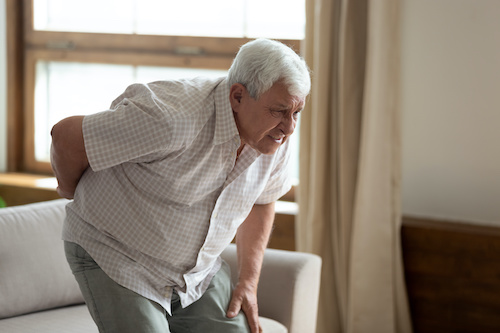Many things that change throughout a person’s life, especially when they get older, developing osteoporosis shouldn’t be overlooked. According to the International Osteoporosis Foundation, it is known as a silent disease since there are typically no warning signs of its development. In fact, the disease is often diagnosed when a patient visits a medical facility due to a fracture. Understanding the risk factors and good habits you can develop to reduce the risk of osteoporosis is important.
Common Risk Factors For Developing Osteoporosis
Some people will develop the disease whether genetics is a factor or not. Age is a risk factor no one can avoid, but other risk factors include smoking, living a sedentary lifestyle, and being underweight. Females are also usually more prone to developing osteoporosis. Having a family history of osteoporosis or previously fracturing a bone can also increase the risk of developing the bone disease. Many of these risk factors can’t be avoided, but good habits can reduce some modifiable risks.
Healthy Habits to Reduce Your Risk
Calcium is the most important mineral you can put in your body to maintain strong bones. Without the proper amount of calcium, the body will naturally pull calcium from the teeth and bones, eventually leading to bone loss. It’s also important to consume plenty of magnesium and vitamin D, which combine to help absorb calcium. Potassium, zinc, and other vitamins also play a large role in maintaining healthy and strong bones.
So, what foods should you eat as part of a healthy diet for osteoporosis prevention? Healthy servings of the following foods are beneficial:
- Proteins like chicken, fish, eggs, and lean red meat
- Dairy products like cheese, milk, and yogurt
- Vegetables like kale, broccoli, cabbage, potatoes, and brussel sprouts
- Fruits like raisins, grapefruit, prunes, strawberries, and figs
Many of these foods may be common in your diet already, so it’s important to ensure you’re incorporating a good mix of them daily.
Early Detection Is Critical
Seniors should talk to their primary physician about when they should begin osteoporosis screenings. The earlier the signs of osteoporosis can be detected, the better the chances are of preventing it and continuing independent living without any bone problems. The first screening for osteoporosis usually comes around age 65, but your physician can indicate whether you should have one done earlier due to your family history or other factors.
Next Day Access is here to help seniors enjoy independent living as long as possible. Whether you have osteoporosis or simply want to make your home safer to navigate, we have you covered. A wheelchair ramp to enter the home is safer than using the stairs, and grab bars can significantly improve bathroom safety. These are two common products we install for seniors, but we would be happy to provide you with a free home assessment to see which accessibility products are right for you. Be sure to Nous contacter today to get started.





